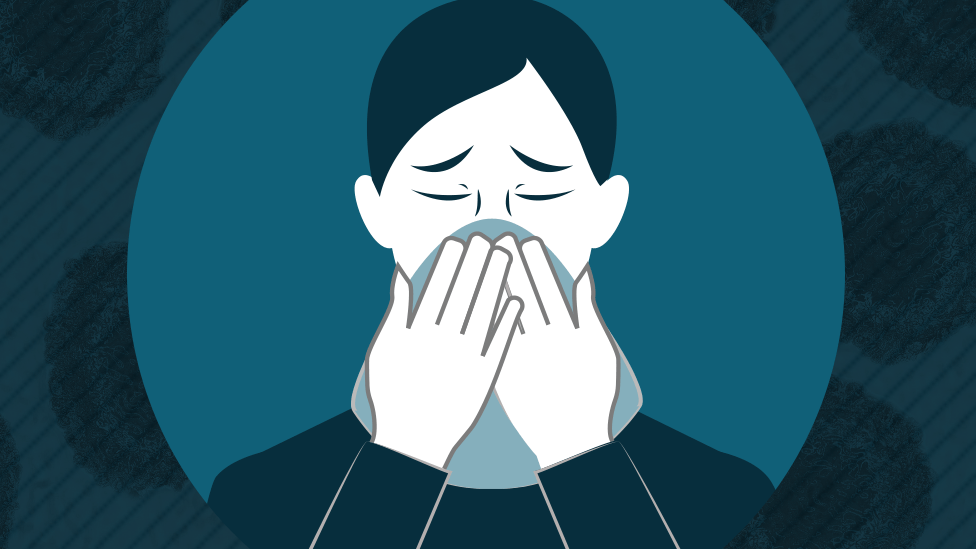Coronavirus: Can the US catch up on testing?
- Published

The US government has come under fire for its response to the coronavirus - particularly because it has tested far fewer people than other affected countries.
On Thursday, the top health official for infectious diseases admitted that the testing system was "currently failing", and that the US was not able to supply tests "easily, the way people in other countries are doing it".
On Friday, US President Donald Trump declared a national emergency and said more tests would be available soon.
So what exactly went wrong - and will the US be able to catch up now?
How many people have been tested in the US?
The short answer is no-one knows for sure - not even the government.
Both Vice-President Mike Pence and Health and Human Services Secretary Alex Azar have been unable to confirm how many Americans have been tested.
This is because some tests were being conducted by private laboratories and hospitals that have not been reporting in to the Centers for Disease Control and Prevention (CDC).
"We don't have a centralised data registry tracking this the way we should," says Prof Howard Forman, a public health expert at Yale University. "We should learn from this experience - having a centralised registry to keep track, with information flowing from labs to state and then federal governments, is critical."
A doctor who became a patient describes what it's like to get tested for coronavirus
One thing that is widely accepted however, is that US testing has lagged far behind that of other countries.
One project by The Atlantic, external estimates that about 38,600 people have been tested in the US so far.
By contrast, countries with far smaller populations have conducted more tests. South Korea has tested more than 240,000 people, while the UK has tested 44,100 people, external.
During a conference last week, Prof Pardis Sabeti, an expert in infectious disease, estimated that South Korea was testing "700 times more people per capita than the US".
And Canada, which has a population nearly 10 times smaller than the US, has tested about 25,000 people as of Sunday.
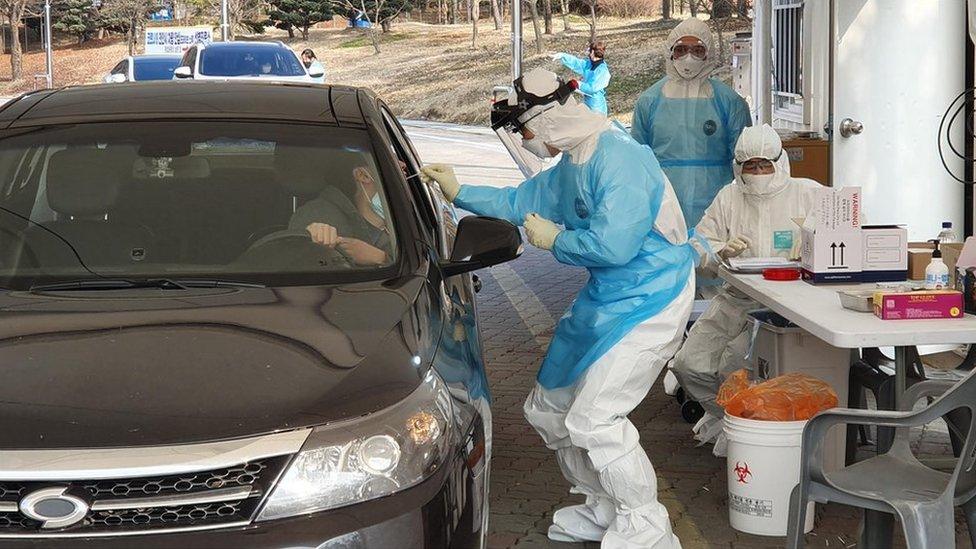
South Korea has been conducting drive-through coronavirus testing
Prof Forman says the US response has been inadequate.
"Certainly at a federal level, we've not done a good job at all," he says.
"In an ideal world we'd be emulating South Korea - with parking lot and drive-through testing" which prevents sick people waiting in emergency rooms and infecting others, he adds.
Why do testing numbers matter?
Covid-19 has a lower death rate than many other diseases, and many with the virus will only experience mild symptoms - especially those who are young and relatively healthy.
However, experts say testing is crucial so that officials can identify where the hotspots are, to prevent the disease from spreading and infecting those who are vulnerable.
"The disease may be mild for some individuals - but that doesn't mean they're not contributing to it spreading in the community," says Prof Forman.
Top US doctor explains US testing failure
Some of the coronavirus hotspots, for example in Kirkland in Seattle, or the Biogen conference in Boston, were only discovered after experts traced the contacts of those who fell ill, he says.
"That should scare people because [coronavirus] could be happening in the hundreds or thousands in other places, but the absence of testing stops us from finding out about it."
Identifying where the virus is spreading would also help officials decide when and where they should take measures like shutting down schools, because "prematurely shutting down" schools can also cause problems, he adds.
Why did the US lag on testing?
There are several factors at play.
The World Health Organization approved a coronavirus test in January - but the US decided against using it, and instead had the CDC develop its own test.
In February, the CDC despatched testing kits across the US - but some of them didn't work properly, and led to inconclusive results.
The fact that the US has a "siloed" healthcare system, with various public and private health providers and laboratories, has also made testing more complicated, says Susan Butler-Wu, an associate professor at the Keck School of Medicine of USC, and a laboratory director in Los Angeles.
"There is not a co-ordinated clinical response that can be rolled out, like there was in South Korea. We have no such thing as a national plan for testing."
Instead, many large laboratories have had to develop their own laboratory tests and seek emergency clearance from US regulators, which can be an "onerous" process, she says.
Meanwhile, smaller laboratories do not have the equipment or space required to run laboratory tests - instead, they tend to rely on a simpler test, known as a sample-to-answer test - but the devices for such tests are awaiting approval from the FDA, Dr Butler-Wu says.
As a result, laboratories like Dr Butler-Wu's can collect samples, but then need to send them to a commercial reference laboratory for testing and results, which can slow down the process.

LIVE UPDATES: Borders shut as coronavirus cases rise
EASY STEPS: How to keep safe
A SIMPLE GUIDE: What are the symptoms?
GETTING READY: How prepared is the UK?
TRAVEL PLANS: What are your rights?


A US pathologist, who asked not to be named, also described the process as fragmented: "We don't have a national healthcare system so we don't have the ability to co-ordinate across hospitals... everybody's in competition to some extent, which creates a little bit of chaos."
According to lawmakers who attended a briefing on Thursday, there were also problems with the supply chain for testing kits, with stocks of cotton swabs and gloves running low.
And the director of the CDC told a congressional hearing last week: "There's not enough equipment, there's not enough people, there's not enough internal capacity."
"The truth is... we've underinvested in the public health labs."
Can the US catch up now?
Problems with the testing system are "being rapidly corrected", and that the country is "very close" to getting readily available tests from the commercial sector, Dr Anthony Fauci from the National Institute of Allergy and Infectious Diseases, told CBS News on Friday.
"I think in the next week or so you are going to see an acceleration of the availability of [the] test."
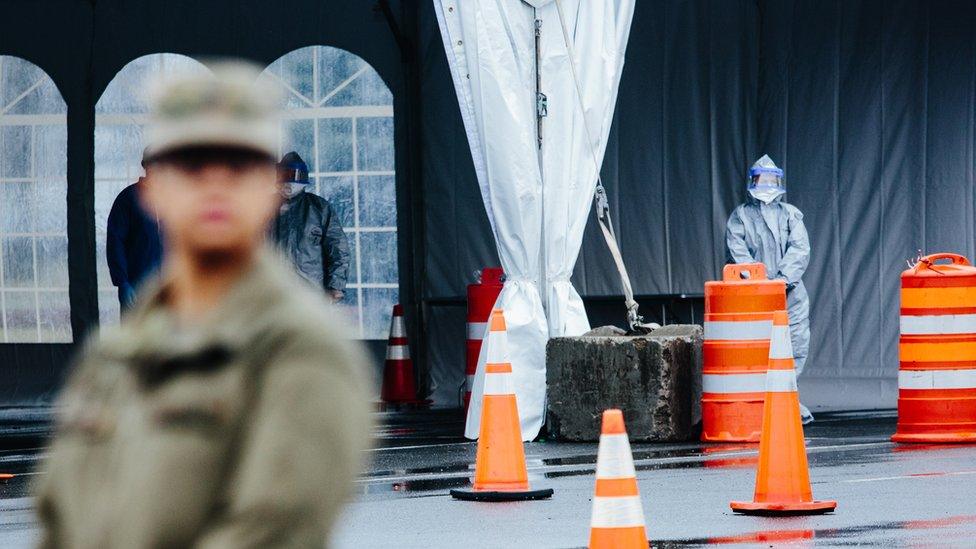
New Rochelle in New York state has started using mobile testing centres
Also on Friday, Mr Trump declared a state of emergency that allows the federal government to tap up to $50bn (£40bn) in emergency relief funds.
He said up to 500,000 tests would be available shortly, and promised that within a month, five million tests would be available, as well as drive-through testing facilities.
Mr Trump also said the government was working with the private sector to make test kits more available to Americans, but added: "We don't want everyone running out and taking [the test] - only if you have certain symptoms," he said.
The Food and Drug Administration has started a 24-hour emergency hotline for laboratories that are having trouble getting supplied needed to perform tests, and has given emergency approval to a new coronavirus test by a drug company that says it can conduct tests 10 times more quickly.
It is also allowing New York state to approve local laboratories for testing, without waiting for FDA approval - which New York governor Andrew Cuomo says will increase the state's testing capacity to about 6,000 tests per day.
Prof Forman says he is hopeful that in the coming days "we'll see better testing numbers that gives us confidence we're moving towards adequate testing".
He also described a "sea change" that began late last week, as private and public bodies have taken more measures to cancel events and discourage large public gatherings.
"We're doing that probably two or three weeks ahead of when Italy did, which gives me hope," he says.
I think I need a test - what should I do?
Prof Forman recommends assessing your symptoms.
Those with serious symptoms should call emergency services and "say they have serious symptoms that might require hospitalisation", and ask to get tested in a safe way, he says.
Meanwhile, those with mild symptoms should self-isolate at home and speak to their primary care provider to work out the simplest way to get tested, ideally without entering the healthcare system, he adds.
Additional reporting by Ritu Prasad
- Published12 March 2020
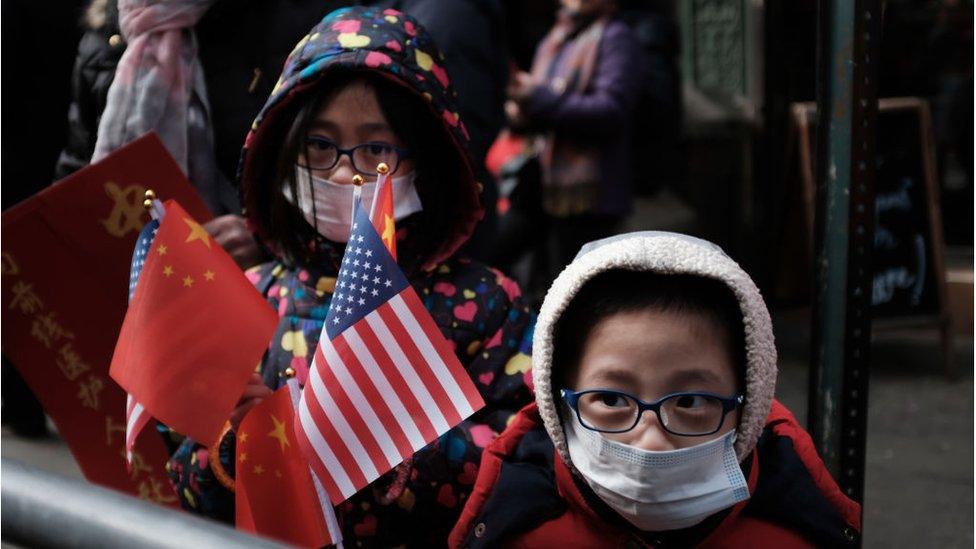
- Published22 February 2022
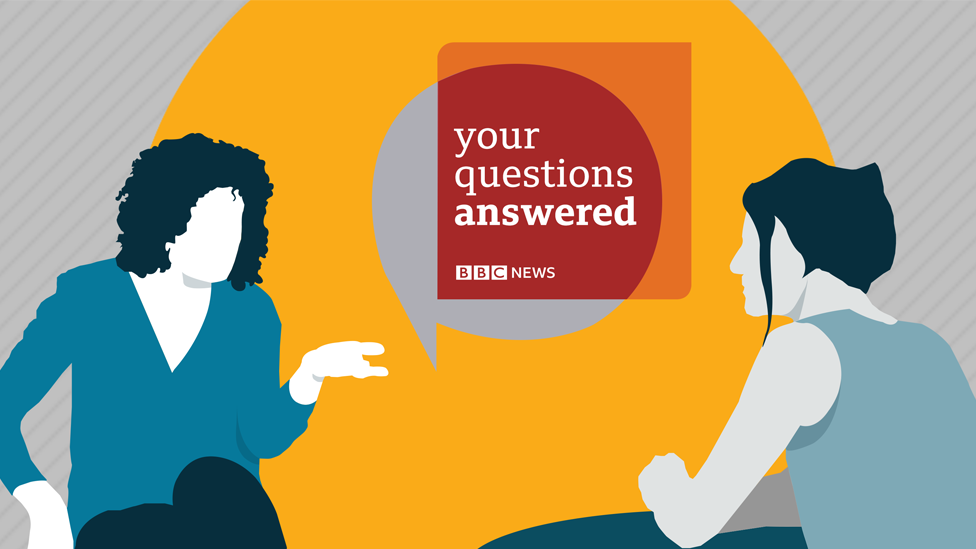
- Published6 October 2021
